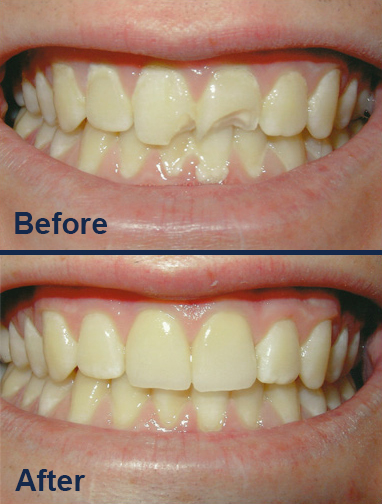The Quick and Low Cost Method to Repair Chipped Teeth
Although regular dental care and proper oral hygiene are key elements in keeping your teeth healthy and beautiful, they have their limitations. Brushing and flossing will not correct chipped, stained or irregularly shaped teeth. Bonding is a quick and easy solution to small chips and imperfections on your teeth. Although bonding works well in a number of situation, it is a much weaker and less cosmetic solution to esthetic problems. Veneers are the preferred solution for chips and minor cosmetic irregularities.
What is Dental Bonding?
Dental bonding is the process of bonding, or gluing in laymen’s terms, tooth colored material to natural tooth structure to correct imperfections. Bonding material may be used to fill cavities as well as providing cosmetic solutions. Although bonding material adheres to tooth structure very strongly, it may break off and may need repair or replacement at times.
Indications for Bonding
Bonding as a number of applications in dentistry. Some of the applications are:
- Fill small gaps between teeth
- Repair cavaties
- Alter the shape of a tooth
- Repair chips or cracks in teeth
- Mask discolorations
- Cover exposed root structure after gum recession
- Enlarge the appearance of a tooth

Is Bonding the Correct Choice For Your Tooth?
Although bonding has a number of promising attributes, you must consult with your dentist to determine the best restoration for your tooth. Bonding is not the best solution in a number of situations such as teeth with large decay or teeth that bear large amounts of pressure.
The Application Process
The application of bonding material is rather simple and quick
- Local anesthesia is usually not necessary unless the dentist is filling a large cavity.
- The dentist will examine and determine which shade must be used.
- The dentist will prepare the tooth for the bonding material and apply a conditioning liquid afterwards.
- The dentist will then apply and shape the bonding material to the affected area to mimic the natural shape of the tooth.
- A special light is then used to harden the material.
- The dentist will then polish and refine the hardening bonding material to make certain the shape and anatomy is correct.
Most bonding cases require 30-60 minutes to complete depending on the nature of the tooth and various other factors.
Caring for Bonded Teeth
In most instances, there is very little care that you will need to be apply to maintain your bonded teeth. However, depending on the tooth and the forces it must bear, the bonding may detach from your tooth if the forces are too great for the bonding material to absorb. Therefore, it is best to discuss the care for your bonded tooth with your dentist. As always, brushing and flossing is critical to your oral health and the maintained of your bonded teeth. Bonding usually will last 2 – 10 years but periodic repairs and touchups may be necessary.
